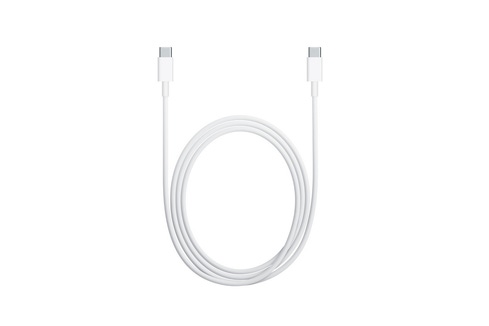USB Type-C: Not All Cables Are Created EqualUSB Type-C: Not All Cables Are Created Equal
The USB Type-C connector is designed to replace data transfer, charging, and video connectors. However, not all cables support the same functionality. Using a low quality cable can result in serious damage to some devices, especially laptops.

(This story is a goodie, but an oldie. If you want something a little newer, try: Move Over Zoom, Holograms are Next, or Imagine a World Without Wires.)
For the purposes of data transfer only, any generic cable will work just fine.
That seems like a simple enough statement, but it becomes a problem when you start talking about actually charging your device. Most devices come with a cable for charging, so that limits the problem. However, when you need additional cables for charging, your best bet will be to get one from the maker of your device so that you can ensure compatibility.
That's all about to change now with USB Type-C cables coming into the market.
USB Type-C connectors are expected to become the new standard in device-to-device connectivity as they grow in popularity, although there are not solid statistics about sales just yet.
USB Type-C cables should offer up to 10Gbps data rates and 100 watts of power. The Type-C connector is user-friendly, offering reversible plug orientation, cable direction, and the ability to transfer power and data simultaneously, as well as support different protocols, such as DisplayPort, MHL, HDMI, and Thunderbolt.
A USB Type-C port can replace many different connectors presently found on most laptops. The Apple MacBook, introduced early this year, uses the single USB Type-C port for:
Charging
USB 3.1 Gen 1 (up to 5 Gbps)
Native DisplayPort 1.2 video output
VGA output using USB-C VGA Multiport Adapter (sold separately)
HDMI video output using USB-C Digital AV Multiport Adapter (sold separately)
While USB Type-C is a great idea -- combining the most used functions on mobile devices -- many cheap USB cables are only designed for data transfer and about 10Wh of power. Devices such as the new Apple MacBook or Google Chromebook Pixel 2 charge at 29Wh.
Probably most USB Type-C cables can be used for USB 3.1 data transfer and basic VGA output, but the quality of the cable will become an issue for charging, as well as high-definition HDMI and DisplayPort video output, where the power requirements are much higher.
Apple users are usually wary of buying original accessories for their beloved devices due to the high price of items, such as headsets and basic cables. Since a cable is a cable, many people will be inclined to think that they can use any similar USB Type-C from the market as a backup for their Macbook.
Depending on what you want it for -- the answer is maybe.
For example, you could buy an additional charging cable for your smartphone, such as the OnePlus 2, but you shouldn't use it for your new Macbook.
A basic USB Type-C to USB adapter cable costs $19 at the Apple store. A similar cable from Amazon can cost from $9 to $25, depending on the manufacturer. If you plan to use the cable to transfer data from your external HD or a Flash Drive, most cables will work. Using a cheap cable to charge your computer, however, is a different issue. The cable can damage the charger, the cable itself, and ultimately the laptop.
To illustrate this problem, Benson Leung, a Google engineer on the Chromebook Pixel team, started buying USB Type-C cables on Amazon and testing them. What he found is at least worrisome: Some of the specifications in a cable may be way off. In some bad cables, incorrect resistor values could change completely and affect the operation of the device.
Leung started blogging about it on his Google+ account and showing people how to test the cables on the Chromebook Pixel 2015, on developer mode. Unfortunately, his instructions only work on that Google machine, and cannot be used on other computers such as the Macbook.
Only a handful of devices are using USB Type-C now. However new devices are coming to market fast. If you have paid around $1,000 or more for your laptop, don't try to save $10 buying a cheap cable.
About the Author
You May Also Like






